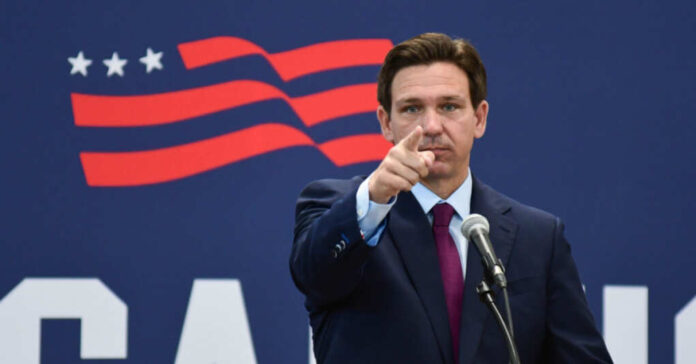
Florida Governor Ron DeSantis is facing a bleak battle in his bid for the White House. In the national Republican primary race, Ron DeSantis has seen his support drop from an average of 31% in January to 12.5% currently, according to RealClearPolitics. In New Hampshire, he’s currently in third place, trailing behind Donald Trump and former U.N. Ambassador Nikki Haley, with only 10% support.
His fall from grace has been a comedy of errors from the start.
Early on, DeSantis missed a crucial opportunity to confront Donald Trump’s rise in the 2024 Republican presidential race. Back in April. DeSantis was preoccupied with the legislative session in Florida. The delay frustrated some donors who wanted a more aggressive early stance against Trump.
The contentious abortion bill passed during that time alienated some key donors. DeSantis faced a challenge in balancing donor dissatisfaction over the abortion ban with the campaign’s need to appeal to religious conservatives, a critical voting bloc in Iowa. He also missed opportunities to secure endorsements from Florida’s Republican lawmakers, as he hadn’t officially declared his candidacy, allowing Trump to gain their support.
As a result, the gap between DeSantis and Trump widened significantly. Hesitating to engage with Trump’s attacks and delaying his official campaign launch, DeSantis created a vulnerability. He then compounded the issues by making his late campaign announcement via an audio-only Twitter (now known as X) forum with Elon Musk, which was hindered with technical issues.
Meanwhile, Trump and his team proactively painted DeSantis as a threat to Social Security and Medicare, given the governor’s support for restructuring these programs. This attack strategy was successful because DeSantis was relatively unknown to many Republican voters.
DeSantis’ lackluster showing during the GOP primary debates didn’t help the struggling candidate. He could only watch helplessly as Nikki Haley ruled the stage and pushed him further behind in the polls.
During the most recent Republican primary debate in California, he took a more critical stance by scrutinizing Trump’s absence and his spending record. In Tampa, Florida, DeSantis expressed his view on the 2020 election, stating that he believed people were not voting for Biden but rather against Trump. He suggested that Trump had energized Democrats to a significant degree, unlike any other political figure.
But it was all for nothing, as he slipped even further behind in the polls.
In response to these setbacks, DeSantis’ campaign is now making strategic adjustments. He began engaging with mainstream media, adopted small-scale retail politics, and is focusing on winning the first nominating contest in Iowa to halt Trump’s momentum.
Currently, DeSantis is in second place in Iowa, securing 16% of the vote, while Trump continues to lead the state with 49% support.
Some see his new approach as his only remaining chance to make a mark in the 2024 Republican presidential race. But Dan Schnur, who directed communications for Senator John McCain’s 2000 presidential campaign, feels that the odds of this strategy succeeding are not in DeSantis’s favor. Still, given his current situation, this might be his best and final opportunity to gain ground in the race.
But DeSantis’ waning popularity is fueled by another challenge. He may be running out of money.
During the months of July through September, Governor DeSantis’s campaign and fundraising efforts managed to collect a significant $15 million, leaving them with $13.5 million in cash, but only $5 million can be used in the primary election. In contrast, Donald Trump raised a substantial $45.5 million in the same period, maintaining a healthy $37.5 million in cash reserves. This financial contrast underscores the significant fundraising advantage that Trump holds in the current political landscape.
University of Iowa politics professor Timothy Hagle notes, “One of the nice things about Iowa is you don’t have to have a lot of money to compete here.” But he went on to caution that as the caucuses draw nearer, it’s common for campaigns to allocate their funds towards media advertising, including costly television ads, and efforts to encourage voter turnout.
Outwardly, DeSantis remains hopeful that his Iowa Hail Mary will do the trick. DeSantis explained on an Iowa radio show that he’s focused on laying the foundation, establishing relationships, and earning support, which he believes will pay off on caucus night. He warns that his extensive tour of the state might not be immediately visible in poll results.
But DeSantis faces an uphill battle, and his Iowa strategy may not be enough to catch up to Trump. DeSantis remains hopeful, but his path to victory is uncertain.















